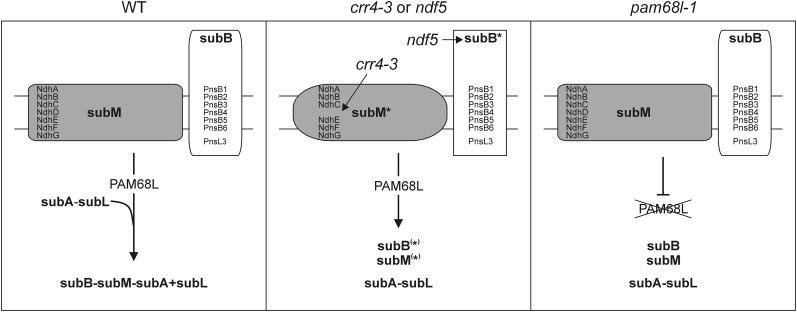Figure 8.
Schematic Model for the Proposed Function of PAM68L.
In wild-type (WT) plants, subM and subB are assembled into an intermediate, which may also include subA and subL. Whether this takes place in two steps (formation of a subB-subM complex, followed by incorporation of subA-subL) or in one step (direct linkage of subB, subM, and subA-subL to form a single intermediate) is unclear. In crr4-3, the impairment in NdhD expression leads to the accumulation of the incomplete subM (as indicated by the accumulation of an assembly intermediate containing NdhA), which cannot be integrated into a larger intermediate. As a consequence, subB and subA-subL intermediates accumulate. Similarly, ndf5 plants with a primary defect in subB assembly also accumulate all three intermediates. Lack of PAM68L also leads to the accumulation of the three intermediates found in crr4-3 and ndf5. Because (1) ndhD expression does not require PAM68L (Figure 5), although the profile of residual NDH subunit accumulation in pam68l-1 is more similar to that of crr4-3 than that seen in the subB mutant ndf5 (Figure 4D), and (2) P. patens does not require a PAM68L protein for the assembly of subB and subM, we conclude that PAM68L is involved in the assembly of subB and subM into a larger intermediate that possibly also includes subA and subL.

